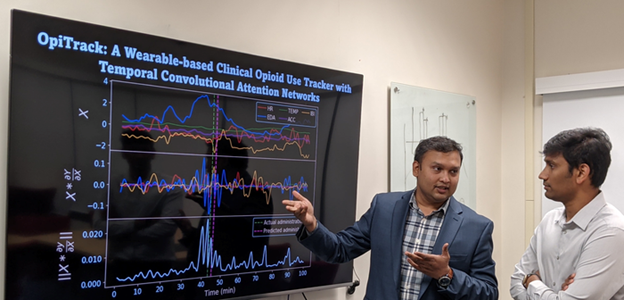
A mobile sensor expert, Tauhidur Rahman, assistant professor in the College of Information and Computer Sciences, and colleagues at Syracuse University and SUNY Upstate Medical University are putting their heads together on an opioid craving project funded by the National Science Foundation’s Smart and Connected Health program.
At the heart of the technology is a tiny, wireless sensor that relies on machine learning to determine the presence of psychophysiological signs, including respiration and electrocardiogram (ECG) that occur with opioid cravings. The team says that the cravings are the primary causes of OUD relapse and fatal overdose following abstinence.
The sensor alerts the user with mindfulness-based interventions when a craving is detected. The researchers also published a paper in Proceedings of the ACM on Interactive, Mobile, Wearable and Ubiquitous Technologies on tracking opioid use with a wearable device and developing predictive models using machine learning. By looking at a watch and monitoring a few parameters, it is apparent that someone has taken an opioid to an accuracy level of 80 percent.
The project aims to advance and validate the effectiveness of integrating passive sensing, adaptive artificial intelligence (AI), and mindfulness interventions on regulating drug craving.
